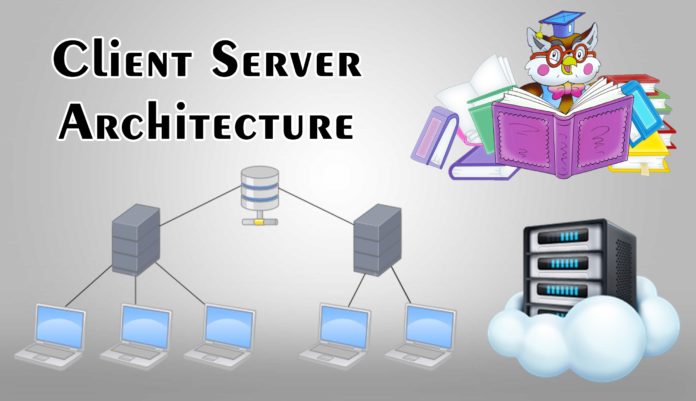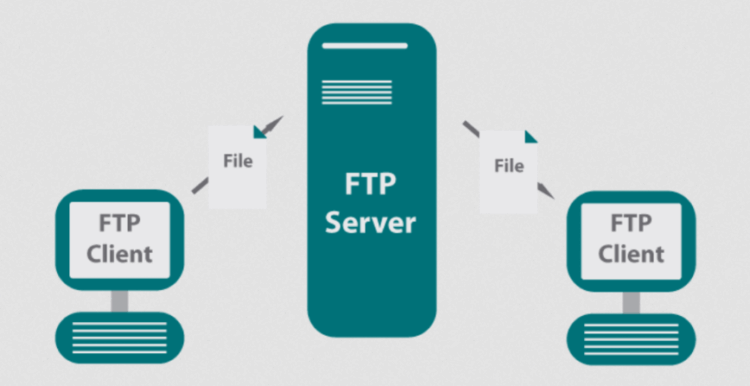Diving into the realm of client-server computing, we unravel the intricate web of interactions between clients and servers in this digital landscape. From fundamental concepts to advanced technologies, this overview sheds light on the backbone of modern applications.
Overview of Client-Server Computing
Client-server computing is a model in which tasks are divided between clients and servers in a network. Clients are devices or applications that request services or resources, while servers are devices or applications that provide those services or resources. This model allows for efficient distribution of workloads and resources, enhancing the overall performance and scalability of the system.Roles of Clients and Servers
- Clients send requests for data or services to servers.
- Servers process these requests and provide the necessary data or services back to the clients.
- Clients display the received data or utilize the provided services to fulfill user needs.
Advantages of Client-Server Computing
- Scalability: Client-server architecture allows for easy scalability by adding more clients or servers as needed.
- Centralized Control: Servers act as a central point for managing data and resources, ensuring better control and security.
- Resource Sharing: Clients can share resources available on servers, optimizing resource utilization across the network.
- Reliability: With redundant servers and backup systems, client-server computing offers high reliability and fault tolerance.
Client-Side Technologies
Client-side technologies play a crucial role in client-server computing by enabling interactions and data processing directly on the user's device. These technologies are responsible for rendering web pages, handling user input, and providing a dynamic user experience.Common Client-Side Technologies
- HTML (Hypertext Markup Language): HTML is the standard markup language for creating web pages and defining their structure.
- CSS (Cascading Style Sheets): CSS is used to style the visual presentation of web pages, including layout, colors, and fonts.
- JavaScript: JavaScript is a versatile scripting language that allows for interactive elements, form validation, and dynamic content updates on web pages.
- DOM (Document Object Model): DOM is a programming interface for web documents that allows scripts to dynamically access and update the content, structure, and style of a web page.
Client-Side Scripting Languages
Client-side scripting languages, such as JavaScript, are used to enhance the functionality and interactivity of web pages. These scripts run on the user's browser and can respond to user actions without requiring interaction with the server. They are essential for creating dynamic web applications that provide real-time feedback and personalized experiences for users.Comparison with Server-Side Technologies
Client-side technologies are executed on the user's device, while server-side technologies run on the server. Client-side technologies are responsible for the user interface, client-side validation, and enhancing user experience, whereas server-side technologies handle data processing, business logic, and database operations. The communication between client-side and server-side technologies is vital for seamless interactions in client-server computing.Server-Side Technologies
Server-side technologies play a crucial role in client-server computing, as they handle the logic, data processing, and storage on the server. These technologies are essential for building scalable and robust applications that can handle a large number of users simultaneously.Popular Server-Side Technologies
- Server-Side Frameworks: Frameworks like Node.js, Django, Ruby on Rails, and Spring Boot provide a structured way to develop server-side applications. They offer pre-built modules, libraries, and tools that streamline development and help in maintaining code quality.
- Web Servers: Apache, Nginx, and Microsoft IIS are commonly used web servers that handle client requests, manage traffic, and serve web pages and resources to users.
- Database Management Systems (DBMS): Systems like MySQL, PostgreSQL, MongoDB, and Oracle are used to store and manage data on the server. They offer functionalities for data retrieval, manipulation, and storage.
Importance of Server-Side Frameworks
Server-side frameworks are crucial for building robust applications as they provide a structured approach to development, enforce best practices, and offer scalability and security features. These frameworks also help in reducing development time and effort by providing ready-to-use components and tools.Examples of Server-Side Programming Languages
- Java: A versatile and widely-used programming language for server-side development, known for its performance, scalability, and robustness.
- Python: A popular language for server-side scripting, web development, and data processing, known for its simplicity and readability.
- JavaScript: Along with Node.js, JavaScript is used for server-side programming to build real-time applications and APIs.
Communication Protocols in Client-Server Computing
Communication protocols play a crucial role in facilitating data exchange between clients and servers in a networked environment. These protocols define the rules and conventions for communication, ensuring that data is transmitted accurately and efficiently.HTTP (Hypertext Transfer Protocol)
HTTP is a foundational protocol used for transmitting data over the web. It operates as a request-response protocol, where clients send requests to servers for web resources, and servers respond with the requested information. This protocol is stateless, meaning each request is processed independently without any knowledge of previous interactions.TCP/IP (Transmission Control Protocol/Internet Protocol)
TCP/IP is a suite of protocols that form the basis of communication on the internet. TCP ensures reliable, ordered, and error-checked delivery of data packets, while IP handles the routing of packets between devices. This combination provides a robust and standardized way for data to travel across networks.WebSocket
WebSocket is a communication protocol that enables full-duplex communication between a client and a server over a single connection. Unlike HTTP, which follows a request-response model, WebSocket allows for real-time, bi-directional communication. This makes it ideal for applications that require low-latency, such as online gaming or live chat.Choosing the right protocol for a specific application is crucial to ensure optimal performance and functionality. Factors such as the nature of data being transmitted, latency requirements, security considerations, and compatibility with existing systems should all be taken into account when selecting a communication protocol. By understanding the strengths and limitations of protocols like HTTP, TCP/IP, and WebSocket, developers can make informed decisions to enhance the efficiency and effectiveness of client-server communication.Security Considerations in Client-Server Computing
Client-server computing poses various security threats that need to be addressed to ensure the confidentiality, integrity, and availability of data exchanged between clients and servers. It is crucial to implement robust security measures to protect against unauthorized access, data breaches, and other cyber threats.Potential Security Threats in Client-Server Architecture
- Malware: Malicious software such as viruses, worms, and Trojans can infect client devices and servers, compromising data security.
- Denial of Service (DoS) Attacks: Attackers can flood servers with traffic, causing them to become overwhelmed and unavailable to legitimate users.
- Eavesdropping: Unauthorized users may intercept communication between clients and servers, leading to data leakage.
- Man-in-the-Middle Attacks: Hackers can intercept and modify data exchanged between clients and servers without their knowledge.
Authentication and Authorization Mechanisms
- Authentication:Verify the identity of users or systems accessing the client-server network through methods like passwords, biometrics, or multi-factor authentication.
- Authorization:Define access rights and permissions for users based on their roles, ensuring that they can only access the necessary resources.
Encryption Techniques for Data Transmission
- SSL/TLS:Secure Socket Layer (SSL) and Transport Layer Security (TLS) protocols encrypt data transmitted between clients and servers, ensuring secure communication.
- End-to-End Encryption:Encrypt data at the source and decrypt it only at the destination, preventing unauthorized access in transit.
- Public Key Infrastructure (PKI):Use public and private key pairs to encrypt and decrypt data, providing a secure method for communication.










